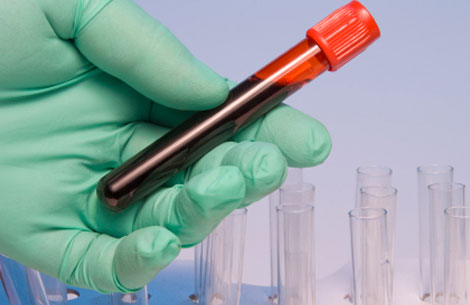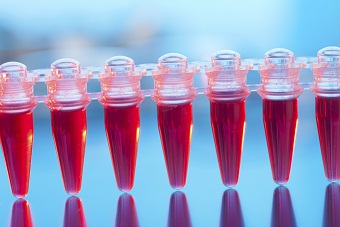
A blood gas test is also called an arterial blood gas test or a blood gas analysis. It measures oxygen and carbon dioxide levels in the blood. The test can also show blood pH levels and lung function.
Doctors often use blood gas tests in emergency situations to help diagnose the cause of breathing difficulty.
In this article, learn more about the purpose of a blood gas test and how to interpret the results.

Purpose
- Doctor holding vial of blood from a blood gas test
- A blood gas test can help to diagnose lung problems.
- Anyone who is struggling to breathe or who has a lung-related health issue will undergo a blood gas test.
The results can help a doctor to identify the cause of symptoms.
A blood gas test can show how well the lungs, heart, and kidneys are working.
More specifically, results of the test can help a doctor to:
diagnose lung and breathing problems
check whether treatments for lung conditions are working
determine whether a person has a ruptured blood vessel, metabolic disease, or chemical poisoning
Doctors also use the test to check the acid-base balances in people who:
- have kidney problems
- have diabetes
- are recovering from drug overdoses
Procedure
A doctor usually performs the test in a hospital, and often in an emergency room, but some doctors can perform the blood gas test in clinics.
A doctor may start with a modified Allen test to determine how well blood is flowing to the hand. This involves applying pressure to the arteries in the wrist to obstruct the blow flow for no more than 15 seconds, causing the hand to change color.
The doctor will release the pressure, and if regular coloring returns to the hand within 5–15 seconds, the results are normal, and the blood gas test can begin.
If the color does not return in this period, it is not safe to continue with testing.
During the blood gas test, a doctor will use a small needle to draw blood from an artery in the wrist.
If a person is receiving oxygen therapy, they will need to stop using it for at least 20–30 minutes before the blood gas test, if possible.
Risks
Drawing blood from an artery can cause more pain than drawing blood from a vein because the arteries contain sensitive nerves and are located deeper within the body.
Any pain or discomfort last for a few minutes after the test. Some people may feel nauseous or dizzy while the doctor draws blood, especially if they are nervous.
To reduce bruising, a person can gently press on the area for a few minutes, once the doctor removes the needle.
Rarely, it is possible for the needle to cause damage or block the artery.
Anyone who has undergone a blood gas test should avoid heavy lifting for at least 1 day to prevent complications or injury.
Additional testing
A doctor will not use a blood gas test alone to make a diagnosis. They usually need other tests, including:
- urine tests to check the functioning of the kidneys
- a chest X-ray or other imaging to examine the lungs
- tests that measure lung volume
The doctor will also request further blood work to determine a person’s blood counts and to check the levels of:
- sodium
- potassium
- bicarbonate
- blood glucose, commonly known as blood sugar
- Understanding the results
- Abnormal results of a blood gas test can indicate that health conditions or injuries are affecting a person’s breathing.
When making a diagnosis, a doctor will consider results of this test and others and a person’s overall health.
The results of a blood gas test can show whether:
- the lungs are getting enough oxygen
- the lungs are releasing enough carbon dioxide
- the kidneys are working properly
The following are normal ranges for results of a blood gas test:
- pH: 7.35–7.45
- partial pressure of oxygen (PaO2): 80–100 millimeters of mercury (mmHg)
- partial pressure of carbon dioxide: 35–45 mmHg
- bicarbonate: 22–26 milliequivalents per liter
- oxygen saturation: 95 percent
- Age, health history, and sex can influence these measurements. Results that fall outside the normal ranges do not always indicate a heart, lung, or kidney problem.
A doctor is in the best position to explain to each person what their results mean.
Source :-Medical News Today

Leave a Reply